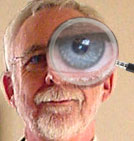These randomly scheduled missives will opine on a variety of topics, mostly intended to be germane to design, construction, capital program management, and other related issues. For shorter trips through the countryside, take a look at our blog, also called Notes from the Road. |
|
January 2012
Many years ago (I won’t say how many), I wrote a primer for up-and-coming Architects: Observations on Architectural Project Management. Somehow, a professor in the ASU School of Architecture thought enough of the content that it was used as the reference for a few lectures I gave to his students. Things happen in life. Relocation and job change caused it to find a home in an obscure corner of the library. A few weeks ago, during an historic house-cleaning, it once again found the light of day. I was intrigued and amused by its relevance (or lack thereof) to contemporary practice. In a way, it gave me the ability to see how things have changed. Maybe it showed how I’ve changed, but I’ll leave that for others to judge. The ConstantsThe following are cherry-picked from the manual: “Project Management is essentially a people and personality driven process.”
“The Project Manager is the person most responsible for the success of the Project.”
I still believe it, but my reasons for saying so have morphed over the years. Back then, I was working against the common assumption amongst young Architects that the firm principal ran the show for project development. While this is, of course, still true in many cases, the important role to be played by a manager was not fully appreciated. I was preaching, I suppose. “Don’t use complex CPM charts or flow diagrams.”
“Coordinate with the reviewing agencies early and often.”
I challenge you to find any written confirmation of agreement that originates from a building official. They just don’t have it in their DNA. The need for this defensive protection has been enhanced by new litigious tendencies.
“Say “Please” and “Thank you”.”
“If you want your team to work hard, you must work hard yourself.”
“How would I like to be treated …”?
Errors, Omissions and Clarifications “Don’t worry about the fee portion (of the Contract).”
“He”, “Him”, and “Man”
What Have We Learned?  That would be for both the Royal and inclusive ‘we’. My manual was written at a time when the discipline of “Project Management” was gaining traction in the curricula of Architectural Schools. Many educational programs and Design Firms have decided that our practice now sits on a three-legged stool of “Design”, “Production” (some say “Technology”), and “Management”. Noted authors on the subject, such as David Haviland, Weld Coxe and Frank Stasiowski became stalwarts of our profession. Sadly, in my opinion, many firms have decided that the three topics are so specialized that cross-over is restricted. As much as I advocate management competence, I see this as a sadly limited view. Technological advances seem to have limited influence upon the personal and personnel relationships inherent in good management. This phenomenon is downright fascinating. As current as we try to be with the tools of our trade, we find ourselves reverting to perennial issues for improving performance and attaining quality. Stereotypes are challenging. A good manager respectfully acknowledges a team member’s identity. The factors are myriad: sexual, cultural, and ethnic. They may be collective or idiosyncratic – all forms are possible. This awareness is essential to a manager’s ability to provide direction sympathetic to the team member’s motivators. The trick is to avoid unproductive references. Yes – I’ve been chastised over my earlier sexism. Conclusion From years ago: “To be good, you must be:
and, above all
What do you think, has this changed? Missed earlier newsletters? Find them here: October 2011 “I Want What I Want” |
|

 New year beginnings always seem to prompt retrospection. Why should I be any different? Looking back usually centers on the previous year’s events, but that seems utterly too predictable, so…
New year beginnings always seem to prompt retrospection. Why should I be any different? Looking back usually centers on the previous year’s events, but that seems utterly too predictable, so…
 “The best Project Managers are decisive.”
“The best Project Managers are decisive.” “Don’t use complex CPM charts or flow diagrams.”
“Don’t use complex CPM charts or flow diagrams.”